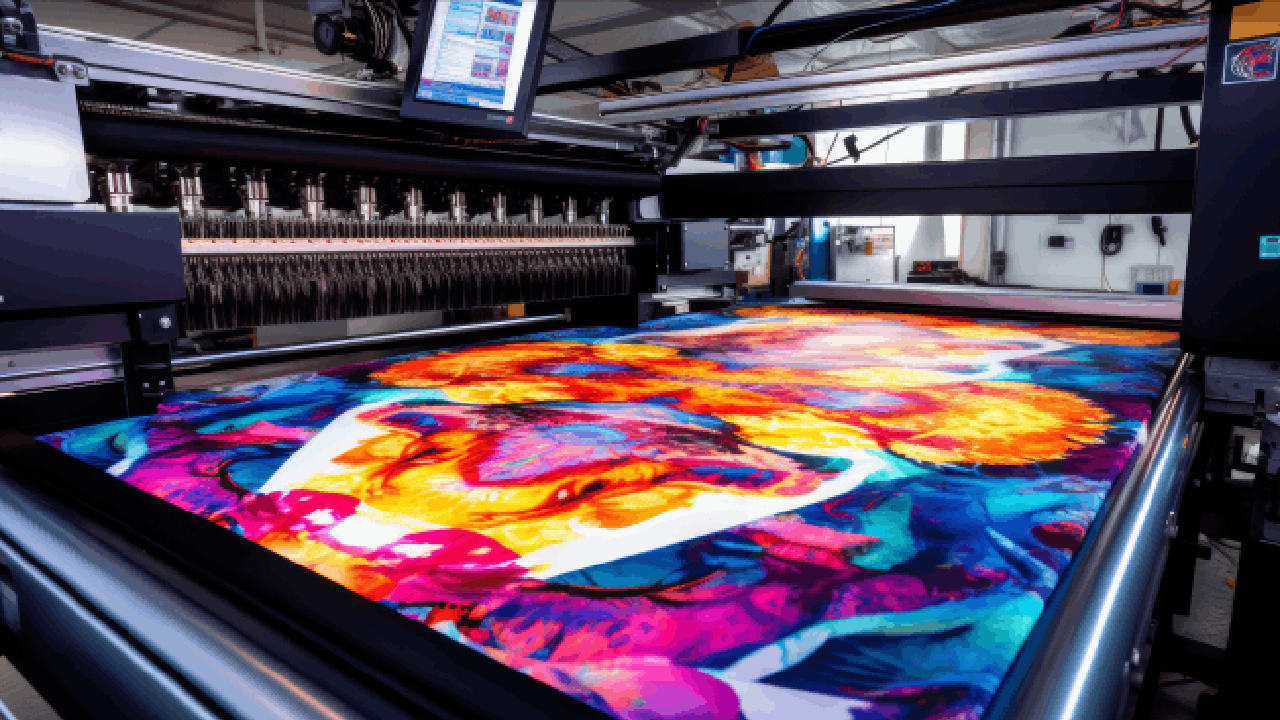When it comes to printing on garments—whether for uniforms, promotional wear, or fashion—the biggest question is durability. Will the print last after repeated washes? Will the colours stay vibrant over time? Or will the design start cracking and peeling too soon?
This is where DTF (Direct-to-Film) printing truly stands out. Known for delivering clean results, rich colours, and long-lasting performance, DTF printing has become a reliable choice for businesses and individuals alike. From concept to the final press, every step in the DTF process supports quality and consistency.
In this article, we’ll dive deep into the durability of DTF prints compared to other printing methods, why they’re ideal for heavy use, and how DTF printing services in UAE are transforming the custom apparel industry.
What is DTF Printing?
DTF (Direct-to-Film) printing is a modern textile printing method where designs are first printed onto a special transfer film using vibrant inks. A fine adhesive powder is then applied, which helps the print bond securely to the fabric when heat-pressed. The result? A durable, flexible, and high-quality print that doesn’t easily crack or fade.
How Does the DTF Printing Process Work?
The process is simple but highly effective:
- The design is digitally printed on transfer film.
- White ink is used as a base layer for crisp results.
- Adhesive powder is applied to the wet ink.
- The film is heat-pressed onto fabric.
- The film is peeled off, leaving a strong, colourful print.
Each step ensures clean lines, sharp details, and long-lasting results.
Why Durability Matters in Garment Printing
Imagine spending money on a beautifully printed t-shirt, only for the design to peel off after a few washes. That’s not just disappointing—it’s wasteful. Durability ensures value for money, especially for uniforms, sportswear, and promotional clothing that undergo frequent washing.
DTF vs Screen Printing: Which Lasts Longer?
Screen printing is known for strong colours, but it often cracks over time. DTF prints, however, remain flexible and soft, making them less prone to cracking even after 50+ washes. Unlike screen printing, DTF doesn’t require thick layers of ink, which adds to the garment’s comfort.
DTF vs Heat Transfer Vinyl (HTV): A Fair Comparison
Heat Transfer Vinyl is popular for small runs, but it tends to peel and feel stiff. DTF, on the other hand, offers flexibility and stronger bonding, ensuring that the print remains intact even with daily wear.
DTF vs Sublimation Printing: Where It Stands
Sublimation works wonderfully on polyester but doesn’t perform well on cotton or dark fabrics. DTF prints are versatile across fabric types, making them a better option for diverse garment printing needs.
Advanced Ink and Adhesive Technology in DTF
DTF uses high-strength inks and premium adhesive powders that penetrate the fibers of the fabric. This ensures excellent bonding, keeping the colours bright and the design firmly in place.
Wash Test Results: How Many Cycles Can DTF Survive?
Independent wash tests show that DTF prints can endure over 50 wash cycles without significant loss of colour or detail. This is a huge advantage over traditional methods that fade after fewer washes.
Comfort and Flexibility: Do DTF Prints Stay Soft?
Nobody wants a stiff print on their t-shirt. Thankfully, DTF prints remain soft and flexible, blending naturally with the garment so that it feels comfortable, not heavy.
DTF on Dark Fabrics: The Role of White Ink
One of the biggest challenges in garment printing is colour clarity on dark fabrics. DTF solves this with a premium white ink base layer, preventing colour bleeding and ensuring that the final print remains vibrant and crisp.
Industrial Use Cases: Workwear and Uniforms
For industries where clothing undergoes heavy wear and washing, such as construction, hospitality, or healthcare, DTF prints provide long-lasting branding without compromising on comfort.
Everyday Fashion: DTF for T-Shirts and Hoodies
From streetwear to casual fashion, DTF prints make designs pop while ensuring garments remain stylish even after months of wear.
Consistency with Quality Control: G7 Colour Calibration
Weekly G7 colour calibration ensures that every DTF print maintains consistent shades and tones. This means brands can rely on perfect colour matching every time.
Value for Money: Why DTF is Cost-Effective
While the upfront cost may be slightly higher, DTF prints last longer, reducing the need for frequent replacements. Over time, this means better ROI for businesses and individuals.
Why Choose DTF Printing Services in UAE?
The UAE is a hub for fashion, corporate branding, and promotional events. With DTF printing services in UAE, businesses and individuals can access high-quality prints that meet international durability standards, ensuring that clothing remains professional, stylish, and reliable.
Conclusion
When it comes to comparing durability, DTF printing takes the lead over traditional methods like screen printing, HTV, and sublimation. With vibrant colours, long-lasting performance, and flexibility, it’s clear that DTF isn’t just another printing option—it’s a game-changer in garment printing. Whether you need uniforms, fashion wear, or promotional clothing, choosing DTF printing services in UAE guarantees prints that look fresh and professional for longer.
FAQs
1. How many washes can DTF prints withstand?
DTF prints can handle 50+ wash cycles without significant fading or cracking.
2. Can DTF be used on all types of fabrics?
Yes, DTF works well on cotton, polyester, blends, and even dark fabrics.
3. Do DTF prints feel heavy on clothes?
No, they remain soft, light, and flexible, blending naturally with the garment.
4. Is DTF better than screen printing?
In terms of durability and comfort, DTF generally outperforms screen printing while still delivering vibrant results.
5. Where can I find reliable DTF printing services in UAE?
You can find many professional DTF printing providers in the UAE, catering to both businesses and individuals for high-quality apparel printing.
